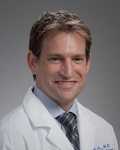18 May Patient Motion During MRI Scanning Can Lead To Significant Added Costs
 MedicalResearch.com Interview with:
MedicalResearch.com Interview with:
Jalal B. Andre, MD
Director of Neurological MRI
Harborview Medical Center
Assistant Professor of Radiology
University of Washington
Seattle, WA 98195-7115
Medical Research: What is the background for this study? What are the main findings?
Dr. Andre: Patient motion during clinical magnetic resonance (MR) examinations occurs frequently, can result in artifacts that degrade image quality, and has the potential to mask underlying pathology and affect patient care. Surprisingly, the frequency of motion artifacts in clinical MR examinations has been poorly documented in the literature, as has been the cost associated with obtaining such exams, specifically those that do not meet diagnostic criteria. To better quantify these observations, we performed a retrospective study evaluating the prevalence of motion artifacts during a randomly selected week of clinical MR examinations.
We devised a graded 5-tier scale to quantify patient motion, which incorporated the potential for clinical impact Using this scale, two neuroradiologists performed a consensus evaluation at a picture archiving and communication system station of 192 MR examinations performed during a single calendar week. This evaluation revealed that significant motion artifact (defined as artifact that could impact image interpretation and potentially change diagnosis) was present in 7.5% of outpatient and nearly 30% of inpatient and/or emergency department MR examinations, and that repeated sequences (subcomponents of an MR examination) were present in nearly 20% of completed MR examinations. In addition, we found that the specific imaged body part was less predictive of subsequent patient motion than was patient disposition (if they were imaged as a hospital inpatient and/or emergency department patient). Using a base-case cost estimate derived from fiscal year 2012 outpatient Medicare reimbursement rates and institutional cost estimates, our analysis suggested that a potential cost of $592 per hour could be lost in hospital revenue secondary to patient motion. Extrapolated over a calendar year, the cost of patient motion (as potential forgone institutional revenue) approached $115,000 per scanner per year.
Medical Research: What should clinicians and patients take away from your report?
Dr. Andre: Patient motion is common, affecting over 16% of all attempted sequences in this study, with repeat sequences identified in nearly 20% of the MR examinations performed. In addition, patient motion is costly; our analysis suggests that the cost implications of motion can approach $115,000 per MR scanner per year. This “cost” does not include the additional burden of throughput delays, the potential increase in patient discomfort from an extended exam, the inefficient use of hospital resources, and the potential for suboptimal radiologic interpretations that increases the medicolegal risk of interpreting motion-degraded images, thus potentially affecting patient safety. Because patient motion may affect much of the global MR community, these observations underscore the need for additional stakeholder investment by manufacturers, hospitals, and researchers in developing and incorporating motion-correction techniques into daily clinical MR exam acquisition.
Medical Research: What recommendations do you have for future research as a result of this study?
Dr. Andre: Future research might include expanding the sample duration, performing a multi-site and/or multicenter study to include evaluation at both hospital and stand alone outpatient imaging centers, and performing a more detailed and precise cost estimate to account for patient disposition (including the exact method of reimbursement for the specific imaged anatomy) and include adjustments for sedation and contrast agent administration. Although the relative proportion of outpatient to inpatient/Emergency department patients may very among institutions, a baseline understanding of the prevalence of patient motion will help inform future studies aimed at incorporating various motion-correction techniques, and help evaluate their performance.
Citation:
Journal of the American College of Radiology Available online 9 May 2015
[wysija_form id=”3″]
MedicalResearch.com Interview with: Jalal B. Andre, MD (2015). Patient Motion During MRI Scanning Can Lead To Significant Added Costs MedicalResearch.com
Last Updated on May 18, 2015 by Marie Benz MD FAAD
